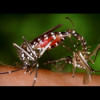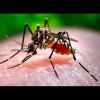Prolonged disability due to post chikungunya arthritis

Chikungunya is a viral disease that spread by the bite of infected mosquitoes. It is a debilitating but usually non fatal disease. The disease was first reported from Tanzania in 1952. Chikungunya is a Makonde word in Tanzania meaning "to walk bent over". It was found that the disease primarily occurred among people residing in the urban and peri-urban areas of those countries.
It spreads by the bite of mosquito Aedes aegypti. Human are thought to be the major source or reservoir of chikungunya virus. The mosquito usually transmits the disease by biting an infected person and then biting someone else. An infected person can not spread the infection directly to other persons.
Aedes aegypti mosquitoes bite usually during the day time. Following an incubation period of usually 2-7 days, it causes acute symptomatic illness like fever, skin rashes and often incapacitating arthralgia. While less common manifestation of the illness like gastrointestinal disorder, haemorrhagic manifestation and neurologic complications such as meningoencephalitis and seizure may also occur.
In most cases symptoms will resolve in 2 weeks. However, as many as 88% of patient can have arthalgia lasting for 1 mont, but in approximately 12% cases, arthralgia can progress to a severe chronic and disabling rheumatic and musculoskeletal disorder that can last from months to many years.
Any polyarticular inflammatory features persisting more than 3 months after chikungunya infection must suggest the potential for diagnosis of post chikungunya chronic inflammatory rheumatism. Morning stiffness probably has a lower diagnostic value due to its high prevalence in post chikungunya illness, whereas synovitis and tenosynovitis are highly indicative of Chronic Inflammatory Rheumatism (CIR).
The causal relationship of development of chronic arthralgia following chikungunya infection has not yet been established. But potential causes of chikungunya virus induced musculoskeletal disorder have been postulated which includes:
♦ Persistence of virus in and around joints
♦ Induction of autoimmune disease process by viraemia
♦ Exacerbation of preexisting joint disease
The spectrum of rheumatic and musculoskeletal disorder are wide and include multiple tendinitis and tenosynovitis, plantar fasciitis, mechanical imbalance in susceptible joints, tunnel syndromes, oedematous polyarthralgia, rheumatoid arthritis and psoriatic arthritis. The musculoskeletal disorder in some cases may even be diffuse in nature. A small group of such patients develop (around 5%) rheumatoid arthritis.
While any joint can be affected, the most commonly reported are the distal joints of extremities such as wrist, metacarpal and interphalangeal joints as well as ankle and metatarsophalangeal joints. In some patients, knee joints are also commonly involved. The chikungunya virus also seems to suppress the host immune responses, thereby contributing to chronicity of the disease.
The writer is an Associate Professor of Orthopaedics. Email: [email protected]

 For all latest news, follow The Daily Star's Google News channel.
For all latest news, follow The Daily Star's Google News channel. 








Comments